Elastographic Tomosynthesis From X-Ray Strain Imaging of Breast Cancer
- PMID: 31497411
- PMCID: PMC6726464
- DOI: 10.1109/JTEHM.2019.2935721
Elastographic Tomosynthesis From X-Ray Strain Imaging of Breast Cancer
Abstract
Noncancerous breast tissue and cancerous breast tissue have different elastic properties. In particular, cancerous breast tumors are stiff when compared to the noncancerous surrounding tissue. This difference in elasticity can be used as a means for detection through the method of elastographic tomosynthesis by means of physical modulation. This paper deals with a method to visualize elasticity of soft tissues, particularly breast tissues, via x-ray tomosynthesis. X-ray tomosynthesis is now used to visualize breast tissues with better resolution than the conventional single-shot mammography. The advantage of X-ray tomosynthesis over X-ray CT is that fewer projections are needed than CT to perform the reconstruction, thus radiation exposure and cost are both reduced. Two phantoms were used for the testing of this method, a physical phantom and an in silico phantom. The standard root mean square error in the tomosynthesis for the physical phantom was 2.093 and the error in the in silico phantom was negligible. The elastographs were created through the use of displacement and strain graphing. A Gaussian Mixture Model with an expectation-maximization clustering algorithm was applied in three dimensions with an error of 16.667%. The results of this paper have been substantial when using phantom data. There are no equivalent comparisons yet in 3D x-ray elastographic tomosynthesis. Tomosynthesis with and without physical modulation in the 3D elastograph can identify feature groupings used for biopsy. The studies have potential to be applied to human test data used as a guide for biopsy to improve accuracy of diagnosis results. Further research on this topic could prove to yield new techniques for human patient diagnosis purposes.
Keywords: 3D X-ray; Elastography; mammogram; strain; tomosynthesis.
Figures














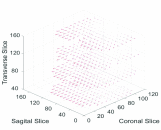


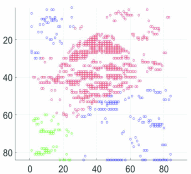
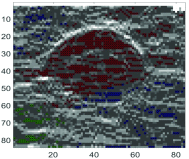

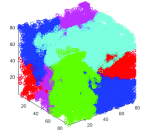

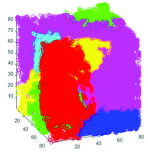

Similar articles
-
Calculation of strain images of a breast-mimicking phantom from 3D CT image data.Med Phys. 2012 Sep;39(9):5469-78. doi: 10.1118/1.4742902. Med Phys. 2012. PMID: 22957614
-
Evaluation of a breast software model for 2D and 3D X-ray imaging studies of the breast.Phys Med. 2017 Sep;41:78-86. doi: 10.1016/j.ejmp.2017.04.024. Epub 2017 May 5. Phys Med. 2017. PMID: 28483356
-
Breast Radiation Dose With CESM Compared With 2D FFDM and 3D Tomosynthesis Mammography.AJR Am J Roentgenol. 2017 Feb;208(2):362-372. doi: 10.2214/AJR.16.16743. AJR Am J Roentgenol. 2017. PMID: 28112559
-
Advances in digital and physical anthropomorphic breast phantoms for x-ray imaging.Med Phys. 2018 Oct;45(10):e870-e885. doi: 10.1002/mp.13110. Epub 2018 Aug 28. Med Phys. 2018. PMID: 30058117 Review.
-
X-ray tomosynthesis: a review of its use for breast and chest imaging.Radiat Prot Dosimetry. 2010 Apr-May;139(1-3):100-7. doi: 10.1093/rpd/ncq099. Epub 2010 Mar 16. Radiat Prot Dosimetry. 2010. PMID: 20233756 Review.
Cited by
-
Dynamic X-ray elastography using a pulsed photocathode source.Sci Rep. 2021 Dec 16;11(1):24128. doi: 10.1038/s41598-021-03221-y. Sci Rep. 2021. PMID: 34916531 Free PMC article.
-
Toward quantitative X-ray elastography of coronary arteries using flexural pulse waves.Proc Natl Acad Sci U S A. 2025 May 6;122(18):e2419060122. doi: 10.1073/pnas.2419060122. Epub 2025 Apr 29. Proc Natl Acad Sci U S A. 2025. PMID: 40299699
References
-
- Bercoff J., Tanter M., and Fink M., “Supersonic shear imaging: A new technique for soft tissue elasticity mapping,” IEEE Trans. Ultrason., Ferroelectr., Freq. Control, vol. 51, no. 4, pp. 396–409, Apr. 2004. - PubMed

